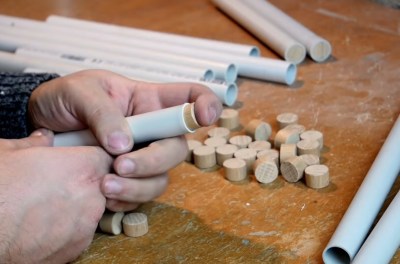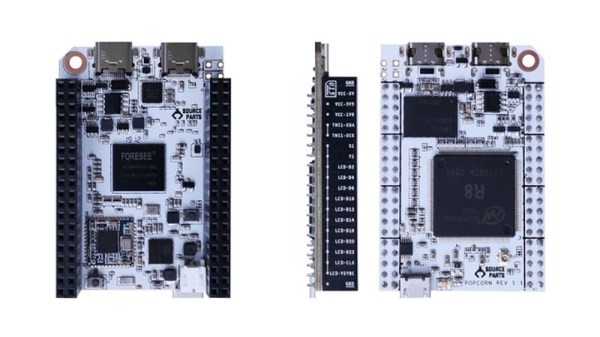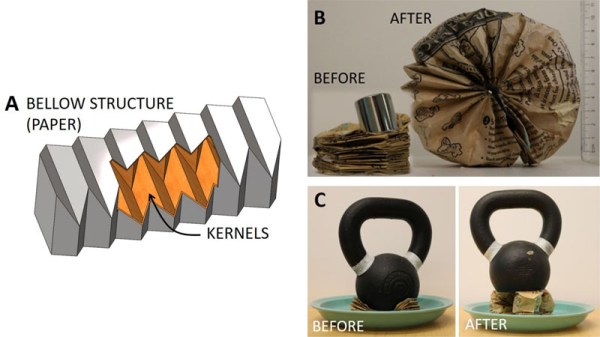There are all sorts of fun ways to make music with empty jugs and other things that resonate with a popping sound when poked with a finger. Should you ever get stuck on that proverbial desert island, you can entertain yourself by making cheerful, staccato music with nothing but a fingertip and the inside of your cheek. At the very least, it will keep your spirits up until you can fashion an ocarina from a coconut.
 [Nicolas Bras] loves to make homemade instruments. When he saw all the scrap pieces of perfectly finger-sized PVC tubing piling up around the workshop, he decided to make an instrument specifically to play the effervescent synth tune “Popcorn”. (Video, embedded below.) He plays it by plugging and quickly unplugging wood-capped pipes with his fingers, and using another PVC tube to blow across the tops of them to fill out the orchestration.
[Nicolas Bras] loves to make homemade instruments. When he saw all the scrap pieces of perfectly finger-sized PVC tubing piling up around the workshop, he decided to make an instrument specifically to play the effervescent synth tune “Popcorn”. (Video, embedded below.) He plays it by plugging and quickly unplugging wood-capped pipes with his fingers, and using another PVC tube to blow across the tops of them to fill out the orchestration.
[Nicolas] started by making a two-octave chromatic scale with 25 pipes ranging from C4 to C6. He kept building on it from there in both directions, ultimately ending up with a poppin’ 68-note pipe organ that sounds fantastic. If you’re interested in getting the sound samples, [Nicolas] has those and the instrument plans available through Patreon.
Be sure to check out the build and demo video below — it’s a joy to see it come together, and the whole thing clocks in under six minutes. Take our word for it and don’t jump to the “Popcorn” cover, because the build-up is necessary for maximum enjoyment.
Hungry for more “Popcorn”? Here’s a robotic glockenspiel busting out a striking cover.



















